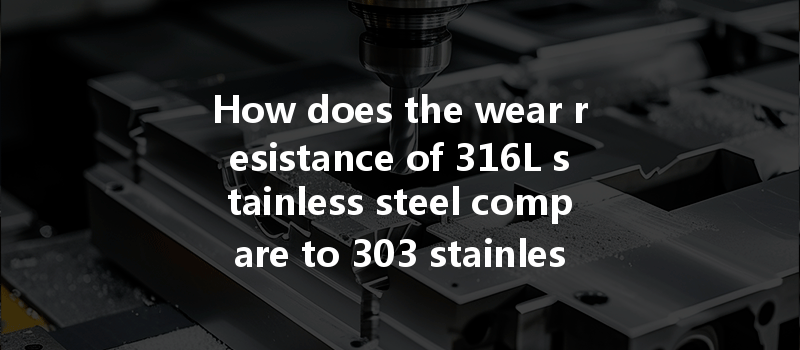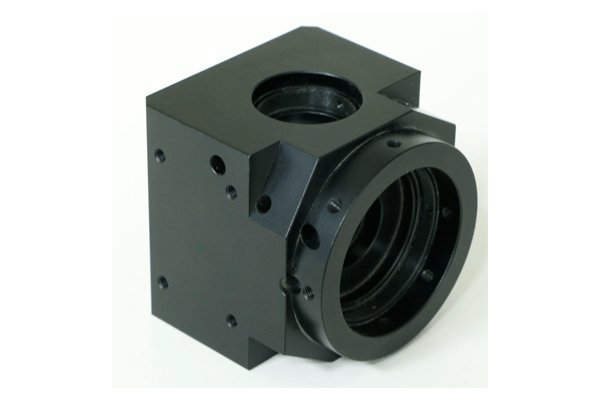Did you know that the process of CNC (Computer Numerical Control) machining has revolutionized modern manufacturing? From aerospace components to medical devices, CNC machining plays a vital role in producing high-precision parts quickly and efficiently. One of the key factors that determine the success of CNC machining lies in the choice of materials used. Among the most commonly machined materials are stainless steels, which are lauded for their strength, corrosion resistance, and versatility. In this intricate maze of metals, two alloys often come into the spotlight: 316L stainless steel and 303 stainless steel.
But what sets these two materials apart, especially concerning their wear resistance during CNC machining? This blog aims to provide a comprehensive understanding of how these materials perform under CNC machining conditions, their properties, advantages, disadvantages, and the best practices for utilizing them effectively.
Section 1: Understanding Stainless Steel Grades
Before diving into the comparative analysis, let’s take a quick look at what 316L and 303 stainless steels are and why they’re used in CNC machining.
1.1 What is 316L Stainless Steel?
316L stainless steel is a low carbon version of 316 stainless steel, which is widely used in various industries due to its excellent corrosion resistance, particularly in chloride environments. The “L” stands for “low carbon,” which enhances its weldability and lacing potential for intergranular corrosion. 316L is known for its strength and is often used in applications that involve marine environments, chemical processing, and biomedical implants.
1.2 What is 303 Stainless Steel?
303 stainless steel, on the other hand, is primarily used for its excellent machinability. It contains additional sulfur and phosphorus, which enhance its ability to be cut and shaped. This grade is typically used in applications requiring moderate corrosion resistance and good mechanical properties but not as high as those offered by 316L stainless steel. 303 is often employed in manufacturing nuts, bolts, and other fasteners.
Section 2: Key Properties Influencing Machinability
Different properties influence a material’s performance in CNC machining, particularly wear resistance. The following are key aspects to consider:
2.1 Hardness
One of the primary indicators of wear resistance is the hardness of the material. Generally speaking, the harder the material, the better its ability to withstand wear. As a result, 316L stainless steel tends to perform better than 303 in high-stress wear conditions due to its elevated hardness levels.
2.2 Work Hardening
316L stainless steel tends to work-harden more than 303 during machining. This could impact the cutting tool’s lifespan and the overall speed of the machining process. While work hardening can contribute to wear resistance, it can also make the machining process more challenging if not managed wisely.
2.3 Corrosion Resistance
While wear resistance is critical, the ability to resist corrosion under specific environmental conditions cannot be ignored. 316L excels in demanding environments, maintaining its integrity longer than 303 when subjected to corrosive agents.
Section 3: Wear Resistance in CNC Machining
3.1 What is Wear Resistance?
Wear resistance refers to a material’s ability to withstand surface damage due to mechanical action. In CNC machining, this can include abrasion, adhesion, and erosion forces that occur during the cutting process.
3.2 Comparing Wear Resistance
When put in direct comparison:
3.3 The Importance of Tool Selection

The type of cutting tool used during CNC machining can significantly impact wear resistance. Harder tools are capable of machining tougher materials like 316L, while softer tools do better with easier-to-machine materials like
Section 4: Machining Process Considerations
4.1 Best Practices for Machining 316L
When machining 316L stainless steel, it’s essential to employ specific techniques to prolong tool life and achieve superior finishes:
4.2 Best Practices for Machining 303
303 stainless steel is generally easier to machine, but missteps can still lead to issues in quality:
4.3 Summary of CNC Machining Techniques
The nuances in machining these two materials highlight the importance of tailoring techniques based on the specific metallurgical properties.
Section 5: Real-World Applications
5.1 When to Use 316L
316L stainless steel finds application in medical implants, chemical processing equipment, and marine environments where corrosion resistance is paramount. Its wear-resistant qualities make it suitable for long-term installations.
5.2 When to Use 303
303 stainless steel is best for manufacturing fasteners, threaded rods, and components that need good surface quality but will not be exposed to highly corrosive environments. It is ideal for tight-tolerance applications where a smooth finish is critical, but extreme wear is not a concern.
Section 6: Cost Implications
The choice of material also comes with financial considerations. 316L generally has a higher material cost due to its composition, but the long-term benefits of reduced wear and maintenance can justify this initial expenditure. The choice between the two often comes down to projecting necessary wear resistance against budget constraints.
In conclusion, the battle between 316L and 303 stainless steel regarding wear resistance during CNC machining is not simply about which material is superior. Instead, it is a matter of understanding the specific applications, environmental conditions, and performance expectations of each material.
316L stainless steel stands out for its exceptional wear resistance, making it ideal for challenging environments, while 303 stainless steel is favored for its machinability and cost-effectiveness in non-corrosive applications.
Understanding these properties, along with the best practices and considerations for CNC machining, can help manufacturers optimize processes, reduce costs, and produce high-quality components with extended lifespans. Readers are encouraged to thoughtfully evaluate their material choices and CNC machining techniques—because the right decisions today could lead to exceptional performance and sustainability tomorrow.






